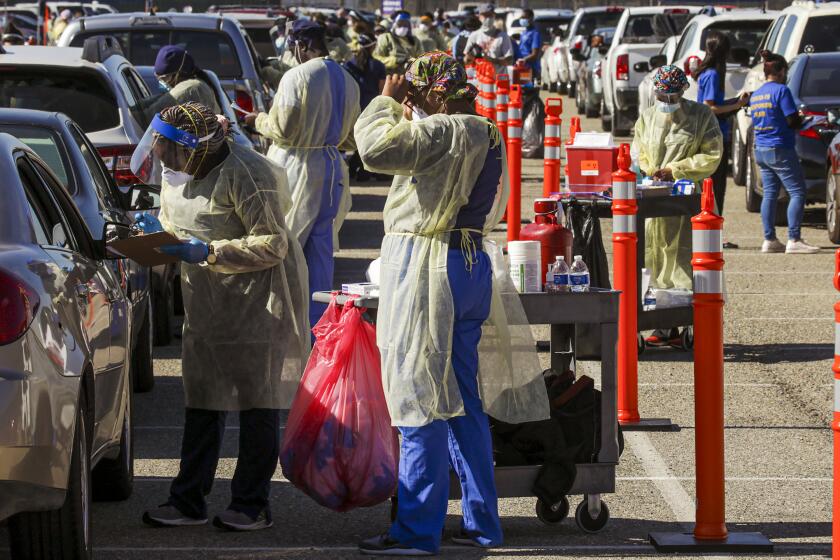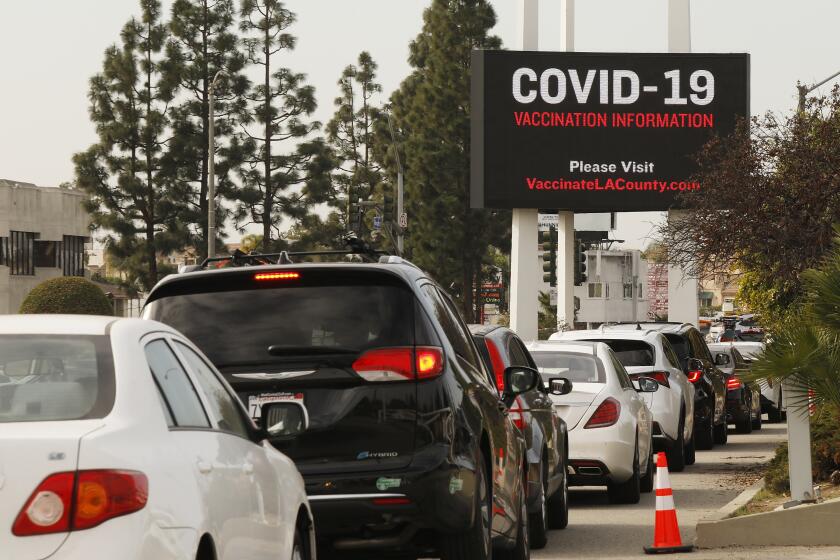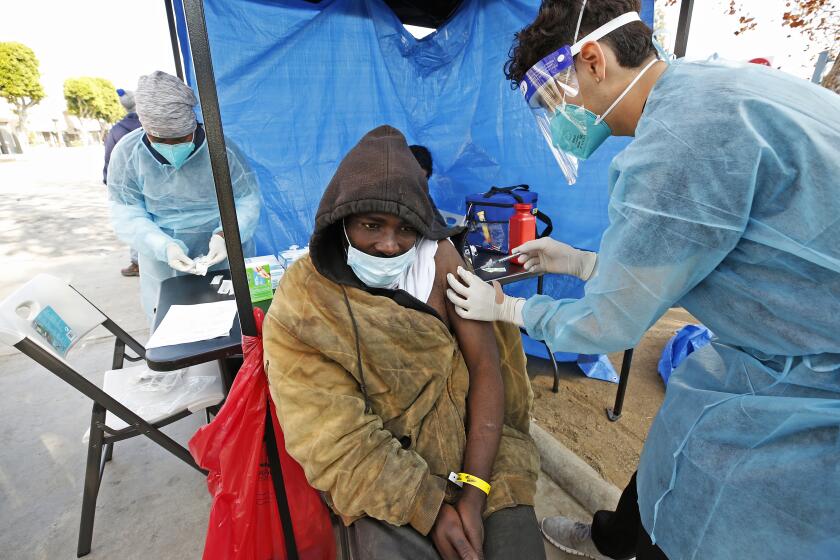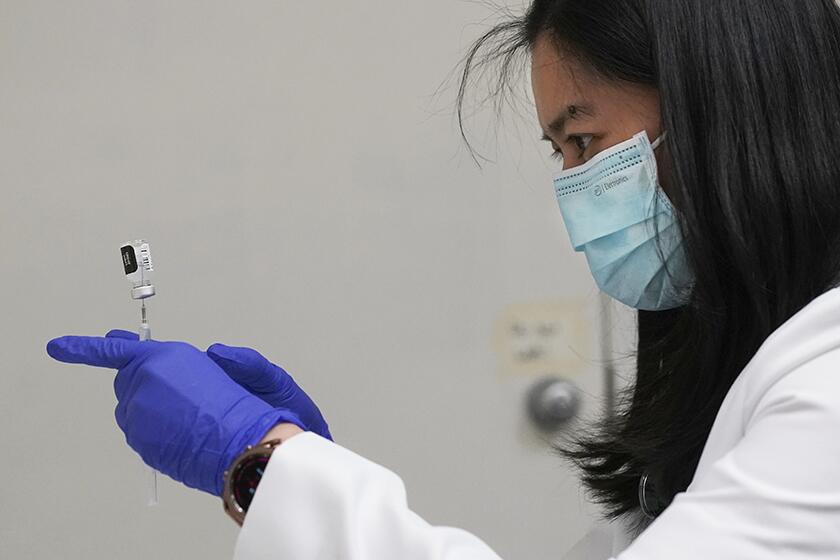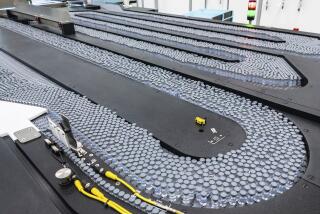5 things to know as millions become eligible for COVID-19 vaccine (including don’t cheat)
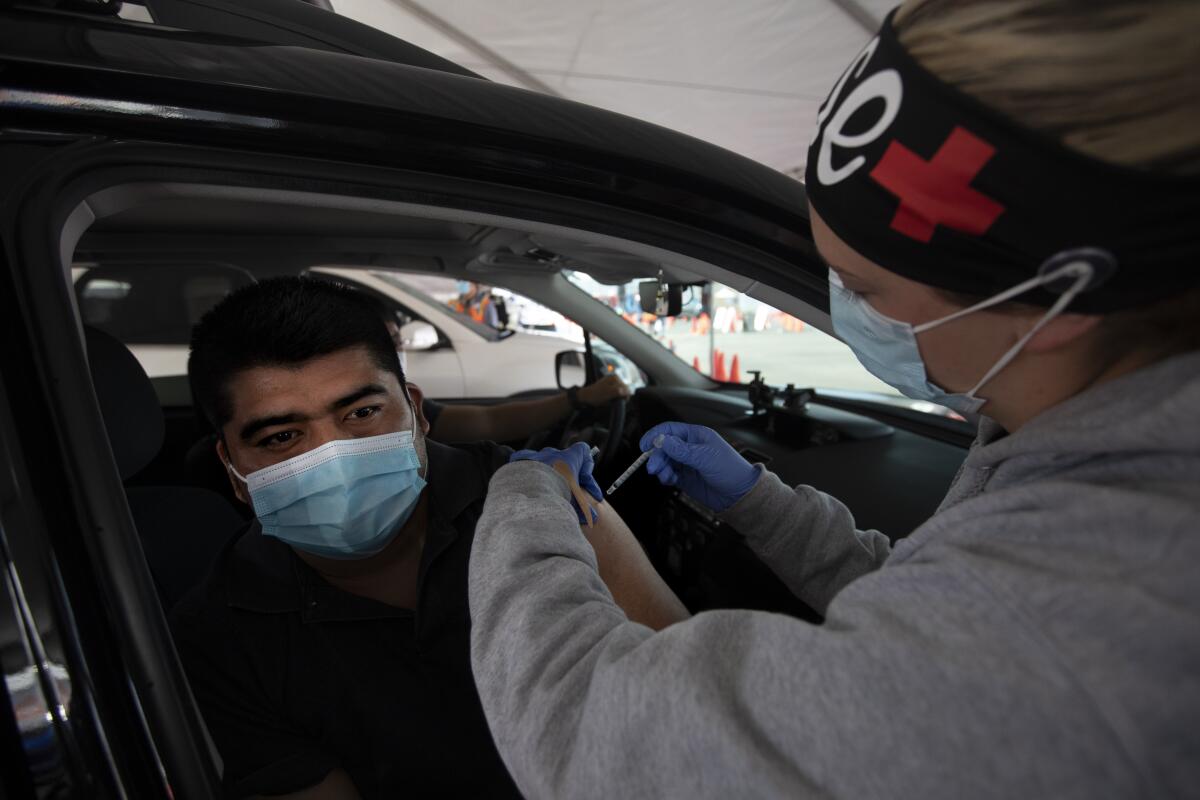
- Share via
Millions more Californians — including those with underlying health conditions and disabilities — can qualify to get vaccinated beginning Monday.
Some of those seeking the vaccine will likely face frustration because of limited supplies. At the same time, people are being asked to follow an honor system of sorts, signing up only if they truly qualify.
Indeed, officials are urging California not to cheat and to avoid getting inoculated ahead of others on the priority list.
“We don’t feel that our frontline staff are in a position to screen and make decisions about who or who is not eligible,” Dr. Paul Simon, chief science officer with the Los Angeles County Department of Public Health, said Friday. “We urge people not to take advantage of that.”
Here are five things to know about the process:
Starting Monday, millions of Californians with preexisting health conditions or disabilities will be eligible to sign up for a COVID-19 vaccine.
1. A trust system
The new guidance’s allowance for self-attestation clears up confusion about how high-risk people can prove their eligibility. Advocates have long pressed for a process that would not create unnecessary barriers, especially for those who are less mobile or intellectually disabled.
Under the guidelines, people do not have to disclose what condition they have, only that they are eligible, Simon said.
The state guidelines for at-risk people essentially trust residents to accurately disclose their eligibility, but some officials have expressed concern that the lenient rules will be abused by people faking underlying conditions. People have forged documents and used access codes intended for high-risk communities.
“We certainly hope people won’t try to take advantage of the situation and will be honest in terms of presenting with legitimate chronic health conditions that are serious, and/or disabilities that are significant,” Simon said.
The process for getting a COVID-19 vaccine varies county to county.
2. Limited supplies
The addition of millions of Californians to the eligibility list will place additional burdens on a vaccine supply that has grown steadily but not significantly. California is reserving 40% of its supply for people in underserved communities and 10% for teachers. And there are still many people 65 and older who are waiting for their vaccinations as well.
Further straining tight supplies: The state on Monday is also expanding eligibility to people who live or work in high-risk congregate residential settings, such as homeless shelters and incarceration facilities, and to public transit and airport employees. In L.A. County, the entire homeless population will be eligible, regardless of shelter status.
L.A. has struggled with vaccine supply levels and is working to address issues related to mobility, accessibility and equity even as the new groups become eligible. Adding to that challenge is that fact that allocations of the Johnson & Johnson single-dose vaccine will come to a near halt over the coming weeks while the company works to ramp up production.
L.A. County is making the homeless population eligible for vaccination.
3. Eligibility
People ages 16 to 64 can be eligible if they are deemed to be at the very highest risk to get very sick from COVID-19.
The high-risk group includes 10 categories: people with cancer; chronic kidney disease of Stage 4 or above; chronic pulmonary disease; Down syndrome; compromised immune system from solid organ transplant; pregnancy; sickle cell disease; heart conditions such as heart failure, coronary artery disease and cardiomyopathies (excluding hypertension); severe obesity; and Type 2 diabetes mellitus.
With population estimates for the group at about 4.4 million and with other eligible groups totaling some 13 million, nearly half of all Californians will now be eligible for a vaccine.
The state also includes a broader, nonspecific category of “individuals who are likely to develop severe life-threatening illness or death from COVID.” The broad language is meant to allow local health providers to use their best clinical judgment in determining who qualifies for the shot, although it has left some, including people with asthma, wondering whether they qualify.
The state on Thursday also offered specific examples of people who would qualify for eligibility but are not explicitly listed.
Those include people who use regional centers, independent living centers, in-home supportive services, community-based adult services, Medi-Cal HIV/AIDS waivers, Medi-Cal home and community-based alternatives waivers, Medi-Cal assisted living waivers, all-inclusive care programs for the elderly, California children’s services programs if the client is 16 to 21 years old, and California genetically handicapped persons programs.
Experts say about most Americans will need to be vaccinated to bring the coronavirus pandemic under control. Track California’s progress toward that goal.
4. Access
Officials are urging residents to work with their healthcare providers to seek vaccinations as their first step.
“Check first with your usual healthcare provider to see if they have vaccines and available appointments. Healthcare providers who have vaccines may also begin reaching out to you, as a patient with a significant, high-risk medical condition or disability known to the provider, to schedule your vaccine appointment,” the state said.
Other options include local pharmacies, local health departments, community pop-up clinics or using the My Turn website. Access details:
- Online at myturn.ca.gov. The MyTurn website is accessible to people with disabilities and in eight languages: English, Spanish, Tagalog, Vietnamese, Mandarin, Cantonese, Korean and Japanese.
- Calling the COVID-19 hotline at (833) 422-4255 from 8 a.m.- 8 p.m. Monday-Friday or 8 a.m.-5 p.m. Saturday-Sunday.
For their part, several healthcare groups in the region, including UCLA Health, Kaiser Permanente, Cedars-Sinai and the L.A. County Community Clinic Assn., said they will be using their electronic health records to identify patients in their systems who meet the clinical criteria and reaching out to them directly.
L.A. County is creating restricted clinics for people with underlying conditions at large-capacity sites, Simon said, and county sites will provide drive-through lanes and accommodations for people with disabilities.
California counties that have refused to sign onto the state’s new COVID-19 vaccine program run by Blue Shield of California are expected to instead reach a separate agreement with the state to end a stalemate that threatened to slow delivery of doses.
5. Patience
Supply will be limited in the coming weeks, but things will improve.
“Right now we’re relieved we [can] get started, but people are going to need to be patient,” L.A. County Public Health Director Barbara Ferrer said Wednesday of the new groups.
President Biden, expressing confidence in supply projections during his national address Thursday night, said he believed every adult could be vaccinated by the end of May.
More to Read
Sign up for Essential California
The most important California stories and recommendations in your inbox every morning.
You may occasionally receive promotional content from the Los Angeles Times.
